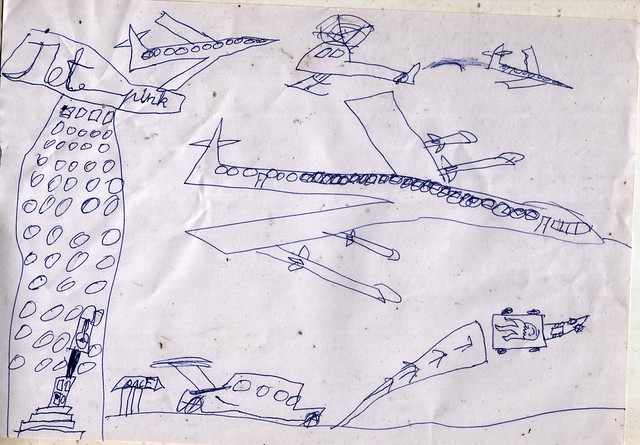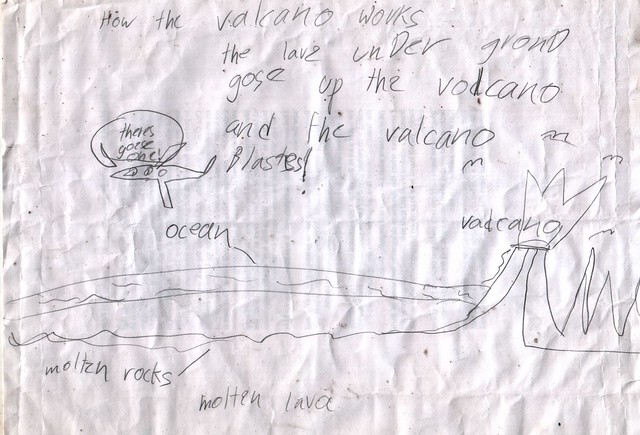Hello, folks. I am a 10 year old kid who lives in Saligao, Goa, India.
Sunday, November 07, 2010
The secrets of drawing....
My first drawing was not so good. My second drawing was little better. My third drawing, I improved.
Now I like drawing because I'm used it, and it comes out really nice.
My favourite things to draw are volcanoes, outer space, faces (cartoon faces I mean), cars and buses. Of all the drawings I like to draw cartoon faces the best. I like drawing cartoon faces because they are funny.
First I didn't know that shading the drawing would make it look better. Now, sometimes, I shade it. My grandfather told me that if I shade it, the drawing would look better.
My favourite colours are sunset orange and red, and yellow, black and brown. Purple too. I like using pencil colours, because they come light and it looks a little better. It takes a long time to colour a big drawing, but when the drawing is small it's easier.
When a drawing is coloured, it looks much better.
Now I like drawing because I'm used it, and it comes out really nice.
My favourite things to draw are volcanoes, outer space, faces (cartoon faces I mean), cars and buses. Of all the drawings I like to draw cartoon faces the best. I like drawing cartoon faces because they are funny.
First I didn't know that shading the drawing would make it look better. Now, sometimes, I shade it. My grandfather told me that if I shade it, the drawing would look better.
My favourite colours are sunset orange and red, and yellow, black and brown. Purple too. I like using pencil colours, because they come light and it looks a little better. It takes a long time to colour a big drawing, but when the drawing is small it's easier.
When a drawing is coloured, it looks much better.
Friday, October 01, 2010
Pygmy blue whales...
 This is the first time I saw a photo of a pygmy blue whale. I saw it on the Wikipedia. Wikipedia is a website that gives you free information about anything you want to search out. Wikipedia allows you to use their photos on your blog, etc.
This is the first time I saw a photo of a pygmy blue whale. I saw it on the Wikipedia. Wikipedia is a website that gives you free information about anything you want to search out. Wikipedia allows you to use their photos on your blog, etc.I like whales because they are beautiful and huge, and they are very big.
http://en.wikipedia.org/wiki/Pygmy_blue_whale
Wednesday, September 29, 2010
Origami animals

Today, I brought home three friends, and I thought them origami. I taught them how to make an animal face. My friends are Yash, Vaman and Raj.
Origami is my favourite hobby.
Origami (折り紙?, from ori meaning "folding", and kami meaning "paper") is the traditional Japanese folk art of paper folding, which started in the 17th century AD and was popularized in the mid-1900s. It has since then evolved into a modern art form. The goal of this art is to transform a flat sheet of material into a finished sculpture through folding and sculpting techniques, and as such the use of cuts or glue are not considered to be origami. http://en.wikipedia.org/wiki/Origami
Sunday, September 12, 2010
Subscribe to:
Posts (Atom)

